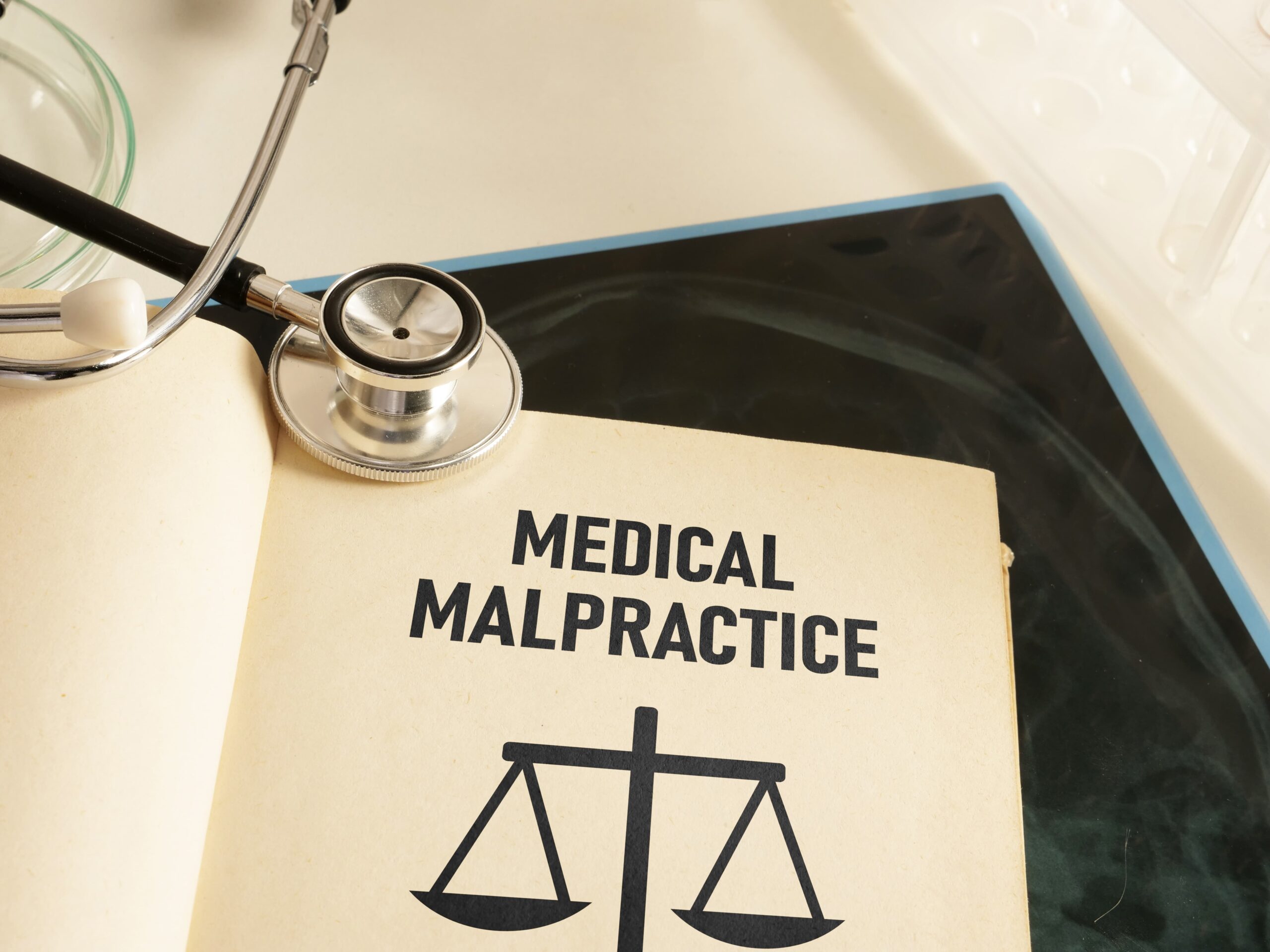- July 18, 2025
A difficult diagnosis can leave parents with countless questions and a heavy heart. You may wonder what went wrong and whether the harm was preventable. This leads to one of the most pressing questions a new parent can face: Do birth injuries always mean medical malpractice?
The answer is not a simple yes or no. While many birth injuries are the tragic result of medical negligence, some can occur even when the medical team does everything correctly.
Distinguishing between an unavoidable complication and a preventable error is the first step toward finding answers for your family.
Defining a Birth Injury

A birth injury is any type of harm a baby sustains during the labor and delivery process. These injuries can range from mild and temporary, like bruising, to severe and permanent, affecting the child’s brain or nervous system.
They happen in the moments leading up to, during, or just after birth. It is a devastating turn of events for any parent who expected to bring home a healthy baby. The focus immediately shifts from celebration to concern for the child's future health and well-being.
It is necessary to separate a birth injury from a birth defect. A birth defect is a health problem that develops while the baby is still in the womb, often due to genetic or environmental factors.
A birth injury, on the other hand, is caused by a specific event or stress during the birthing process. An ultrasound might detect a birth defect months before delivery, while a birth injury happens at the very end of the pregnancy journey.
Familiarizing yourself with this distinction helps clarify where to look for answers about what caused your child's condition. Some common examples of birth injuries include:
- Cerebral Palsy: A group of disorders affecting movement, muscle tone, and posture, often caused by brain damage from a lack of oxygen during birth.
- Erb's Palsy or Brachial Plexus Injury: Damage to the nerves that control the arm and hand, which can happen if the baby's shoulder gets stuck during delivery.
- Bone Fractures: Broken bones, most commonly the collarbone, can occur during a difficult delivery.
- Hypoxic-Ischemic Encephalopathy (HIE): Brain damage that happens when the baby's brain does not receive enough oxygen or blood flow for a while.
The Standard of Care in Childbirth
In the medical field, healthcare providers must follow a "standard of care." This is the accepted level of caution, attention, and skill that a reasonably competent professional would provide in a similar situation.
For an obstetrician, nurse, or midwife, this means using their knowledge and available medical technology to keep the mother and baby safe during labor and delivery. It is the benchmark against which their actions are measured.
The standard of care is not about perfection. It is about providing competent and appropriate care. A birth injury may signal medical malpractice when a healthcare provider’s actions fall below this accepted standard of care, and this failure directly causes harm to the child.
For a medical malpractice claim to be valid, it is not enough that an injury occurred. There must be a clear link between the medical provider's mistake and the baby’s injury.
The standard of care requires them to perform specific actions to ensure a safe birth, including:
- Monitor the Baby’s Heart Rate: The team must continuously watch the fetal heart monitor for any signs of distress. A dropping or irregular heart rate is a warning sign that the baby may not be getting enough oxygen.
- Respond to Fetal Distress: If the baby shows signs of distress, the team must act quickly. This could involve giving the mother oxygen, changing her position, or preparing for an emergency delivery.
- Perform a Timely Cesarean Section (C-Section): When a vaginal delivery becomes too risky for the mother or baby, a doctor should decide to perform a C-section without unreasonable delay.
- Manage Problems with the Umbilical Cord: Issues like a prolapsed cord, where the cord slips down before the baby, require immediate and correct intervention to prevent oxygen deprivation.
- Use Delivery Tools Correctly: If forceps or a vacuum extractor are needed to assist with delivery, they must be used with the proper technique to avoid causing injury to the baby's head, neck, or shoulders.
When a Birth Injury Might Not Be Malpractice
The reality of childbirth is that it carries inherent risks. Some medical complications can arise suddenly and without warning, even with the best medical team in place.
In these difficult situations, a birth injury can happen despite every doctor and nurse providing excellent care. A tragic outcome does not automatically mean someone made a mistake.
Some deliveries are medically complex from the start, and certain injuries may be an unavoidable consequence of a life-saving procedure for the mother or child.
Determining whether an injury was preventable is the central issue.
Unforeseeable Complications
Some events during childbirth are impossible to predict. A sudden placental abruption, where the placenta separates from the uterine wall, can cut off the baby's oxygen supply in an instant.
Due to the speed and severity of the event, a skilled team may respond perfectly but be unable to prevent harm entirely.
Known and Accepted Risks
In a high-risk pregnancy, the mother may be fully aware of potential complications. For instance, a mother with gestational diabetes knows her baby may be larger than average, increasing the risk of shoulder dystocia.
If the doctor discusses these risks and manages the delivery with skill, an injury that still occurs may not be due to negligence.
Underlying Health Conditions
Sometimes, a baby’s or mother's pre-existing health condition contributes to the injury. If the mother has a heart condition that limits her ability to push, or the baby has a developmental issue that complicates delivery, the resulting injury may not be the fault of the medical staff who were managing these known challenges.
Signs That Medical Negligence May Have Occurred

While some birth injuries are unavoidable, many are the direct result of a medical error. Parents often have a feeling that something went wrong during labor or delivery.
You may have noticed a lack of communication, a sense of panic in the room, or a failure to listen to your concerns. These feelings are valid and could point to a deviation from the standard of care.
Identifying potential red flags is the first step in exploring whether your child's injury was preventable. These signs do not offer definitive proof of malpractice, but they strongly suggest that a closer review of the case is warranted.
These signs indicate that the care you received might have fallen short of the accepted medical standard. Pay attention to whether any of the following happened during your delivery:
- Failure to Act on Fetal Distress: The medical staff noticed signs of distress on the fetal heart monitor but did not take swift action.
- Delayed C-Section: The decision to perform a C-section was made, but the procedure was delayed for too long, causing the baby to suffer from a lack of oxygen.
- Improper Use of Delivery Tools: A doctor misused forceps or a vacuum extractor, causing visible trauma, skull fractures, or nerve damage.
- Mismanagement of a High-Risk Pregnancy: The medical team did not take special precautions for a known high-risk condition, like preeclampsia, gestational diabetes, or a large baby.
- Communication Breakdowns: The nurses and doctors seemed disorganized, did not communicate effectively with each other, or failed to listen when the mother said something felt wrong.
- Failure to Manage Shoulder Dystocia: The baby's shoulder became stuck after the head was delivered, and the medical team did not use proper maneuvers to free the baby safely, leading to a brachial plexus injury.
What to Do If You Suspect Malpractice
If you believe your child’s birth injury was caused by a medical mistake, the moments and days following can be confusing. Your primary focus is, and should remain, on your child’s health.
Follow all medical advice, attend all appointments, and ensure your child is receiving the best possible care for their condition. This helps your child and creates a clear record of their health needs moving forward.
At the same time, it is wise to begin gathering information about the birth. The details of what happened become less clear over time, so documenting everything you remember is a powerful step.
Here is a step-by-step guide on what you can do:
- Prioritize Your Child's Medical Care: Your child's health is the top priority. Follow the treatment plan from their pediatricians and specialists. This ensures they get the help they need.
- Request All Medical Records: You have a right to your and your baby’s medical records. Request the complete file from the hospital, including all doctors’ notes, nurse’s notes, and fetal monitoring strips.
- Keep a Detailed Journal: Write down everything you remember about the labor and delivery. Include who was in the room, what was said, how you felt, and the timeline of events. Continue to document your child’s treatments, medications, and any developmental challenges.
- Document All Expenses: Keep track of all costs related to your child's injury. This includes medical bills, therapy sessions, prescription costs, travel for appointments, and any special equipment you need to purchase.
- Be Cautious with Hospital Representatives: The hospital's risk management department may contact you. It is best to limit what you say to them until you have had a chance to speak with someone who can advise you on your rights.
Proving a Medical Malpractice Claim

Establishing that a birth injury was the result of medical malpractice involves more than just having a suspicion. It requires showing clear evidence that connects a healthcare provider's error to the child's harm.
To do this, several specific elements must be proven. This process ensures that claims are based on solid evidence of substandard care, not just a bad outcome. A thorough investigation can reveal whether the standard of care was breached and if that breach was the direct cause of the lifelong challenges your child may now face.
Establishing a Doctor-Patient Relationship
First, it must be shown that a professional relationship existed between you, your baby, and the healthcare providers. This is usually straightforward, as being admitted to a hospital for delivery establishes that the medical team owe you and your baby a duty of care.
Demonstrating a Breach of Duty
Next, it must be proven that the healthcare provider breached their duty by failing to meet the standard of care. This is often the most challenging part. It requires other qualified medical professionals to review the records and state that the care provided was not what a competent peer would have delivered under the same circumstances.
Linking the Breach to the Injury
Finally, there must be a direct link, known as causation, between the provider's breach of duty and the child's injury. It must be shown that the mistake was the specific cause of the harm.
Empower Yourself with Experienced Legal Support
Not every birth injury means medical malpractice occurred, but when a preventable mistake causes lifelong harm to a child, families deserve justice and support. The path forward can seem uncertain, and you likely have many more questions. Knowing whether your child's injury was preventable is the first step toward securing the resources they will need for a lifetime of care.
Our compassionate birth injury lawyers at Goodman Acker P.C. have helped Michigan families facing these devastating situations for decades. We treat our clients like family and fight to get them the answers and the help they deserve.
If you have questions about a birth injury and want to know what your options are, please call (248) 831-1507 for a free and confidential conversation.

